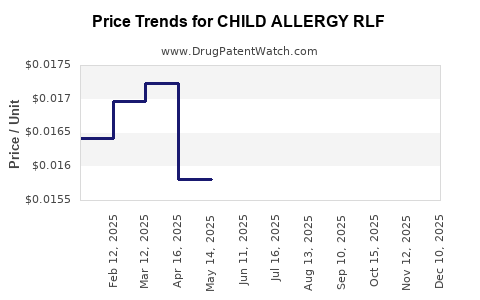Drug Price Trends for CHILD ALLERGY RLF
✉ Email this page to a colleague

Average Pharmacy Cost for CHILD ALLERGY RLF
| Drug Name | NDC | Price/Unit ($) | Unit | Date |
|---|---|---|---|---|
| CHILD ALLERGY RLF 12.5 MG/5 ML | 70000-0474-01 | 0.01650 | ML | 2024-11-20 |
| CHILD ALLERGY RLF 12.5 MG/5 ML | 70000-0492-01 | 0.01650 | ML | 2024-11-20 |
| CHILD ALLERGY RLF 12.5 MG/5 ML | 70000-0474-01 | 0.01762 | ML | 2024-10-23 |
| CHILD ALLERGY RLF 12.5 MG/5 ML | 70000-0492-01 | 0.01762 | ML | 2024-10-23 |
| >Drug Name | >NDC | >Price/Unit ($) | >Unit | >Date |


